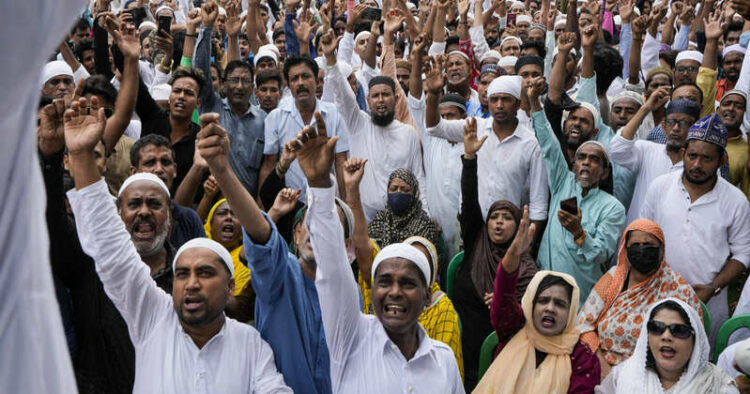Border regions of India are becoming a near impossible task to manage for the Border Security Forces (BSF). Recent reports stemming from Uttar Pradesh and Assam Police suggest that there has been an increase of 32 per cent in Muslims in some of their border regions, significantly above the national average of 10-15 per cent. The police of both states have also expressed that illegal camps comprising illegal infiltrators are cropping up in many border districts. National Intelligence agencies, concerned about these developments presented at an annual police meet have recommended the Border Security Forces (BSF) should increase its operational area to 100 KM from the international border, from the present 50 KM.
The fine print of the gram panchayat census records presented by UP and Assam Police reveal a more detailed picture of this alarming situation.
Seven border districts of UP, namely Pilibhit, Siddharthnagar, Sravasti, Kheri, Balrampur, Maharajganj and Bahraich that share borders with Nepal have seen a 32% increase in Muslim population in the last ten years. A further breakdown of the data shows that in 116 villages in these seven districts of UP, the population of Muslims has increased by more than 50%. There are 303 villages along the border in which the population of Muslims has increased by more than 30%. Much higher than the state average of 12.5%.
The Assam police report suggests similar figures. The state witnessed a whopping 31.45% Muslim population in the border districts of Dhubri, Karimganj, South Salmara and Cachar within 10 km of the Bangladesh border. This is much higher than the projected national and State average of 13.54%.
The report also says that along with the demographic change there has also been a spike in mosques. In just the last four years the construction of mosques and madrasas in these districts has increased by 25%. As per reports, compared to 1,349 mosques and madrasas in the border districts in 2018, the number now stands at 1,688.
It has also come to the fore that it’s not only these two states that are facing this issue. There has also been a rapid increase in mosques and madrasas in Rajasthan and Uttarakhand too. It’s quite certain that if the other seven states who share international borders present a comprehensive report the pictures won’t be too different.
The security agencies have warned the respective governments that an international conspiracy might be brewing with unprecedented levels of illegal infiltrators camping in the border regions. But the issue here is that not all states care equally about national security issues equally.
A journalist with the Organiser magazine named Pranay Kumar recounted his experience living in some of the most Muslim-infiltrated areas of West Bengal. He observed how drastically the demographics have changed in the villages close to the Bangladesh border. Many have turned into completely Muslim-dominated areas infiltrated by Rohingya Muslims. They live in large families of at least 50 people. The father of a Muslim family he came to know revealed “his 3 wives have in total 39 brothers and sisters apart. When my friend asked, “Do you have 3 children?” he proudly replied – “No, 6”. Again, fewer children are considered a “Gunah” in our society.”
They live well by benefitting not only from all the schemes provided by state and central government but they have benefactors living abroad “the rich Muslims of the Gulf countries”.
This has resulted in an exodus of the Hindu families from these regions, who’ve left behind their homes, lands and business, unable to fight the sponsored violence.
Data can never do justice to the painful truths lived on the ground but kudos to the state governments of UP and Assam for putting the facts on the table. There is an urgent need for action. The recent words of Home Minister Amit Shah stating that the rules for Citizenship (Amendment) Act (CAA) will be implemented once the vaccination drive for the Covid precautionary dose is over, comes as a blessing for Hindus who are facing relentless persecution in the various corners of India.
Ground report from border and Muslim dominated areas of West Bengal




















Comments